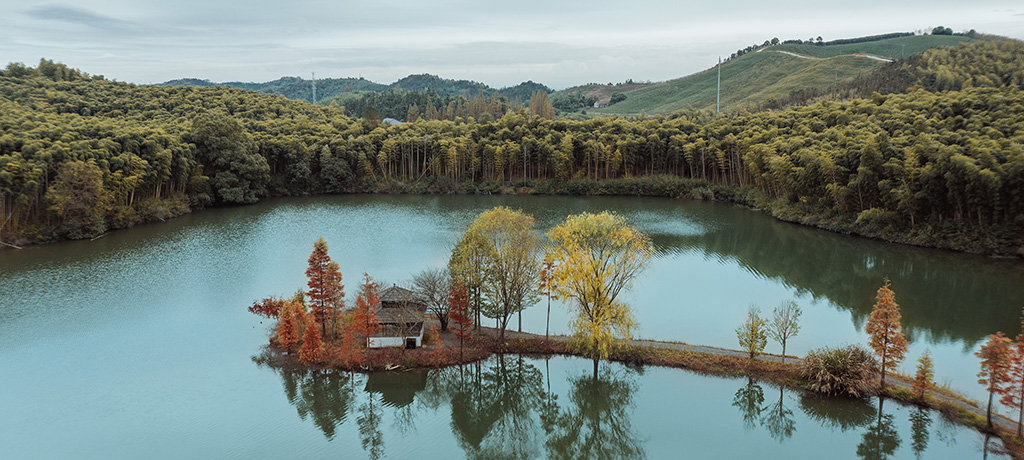The water conservancy system of the Liangzhu Ancient City is composed of High-dam at the Mouth of the Valley, Low-dam on the Plain and Causeway in front of the Mountains.

Shiwu

Qiuwu in Autumn

Qiuwu

Mifenglong, Shiwu, and Qiuwu
The three dams in the east group are Ganggongling, Laohuling and Zhoujiafan. All three dams are small in length (100-200m long), and the dam crest is 30 meters above sea level. According to GIS analysis, there is a rocky pass on the east side of the eastern hill, just one meter or so below the dam, that can serve as a spillway. The highest water level of this group is 29m above sea level, which allows the water to travel up to 3km along the valley mouth into passes (a narrow place between two mountains, often used in place names), forming a steady transport route. The Laohuling Dam itself is 140m long and about 100m wide, sitting at the narrowest point between two small mountains. Archaeologists found that the cross section here had an obvious structure of grass wrapped in mud, so it was scraped flat and kept here for temporary display. It was paved in a horizontal and vertical way. Grass wrapped in mud was used for the same reason that sacks are used today for water conservancy projects; it is a reinforcement process that prevents the soil from disintegrating. In 2015, archaeologists found ceramic fragments typical of the Liangzhu period in the stratum pressed on top of the dam at an exploration unit.
There are three dams in the west group of high dams, namely, Mifenglong, Shiwu, and Qiuwu in the east. All three dams are small in length, about 100-180m. The dam crest is about 40m in elevation. GIS shows a creek on its east side, which is more than 1m lower and functions as a spillway. The Shiwu Dam is 180m long and about 80m wide. The Shiwu Dam is the most beautiful and best-preserved dam site in the whole water conservancy system. Qiuwu is a dam on the east side of the west group of high dams and a site that retains the original reservoir function. Unlike Shiwu, it is a case of the combination of an ancient dam and a modern concrete dam. The interface between the mountain in the west and the artificial dam and the dam made of grass wrapped in mud can be seen clearly, which is 127m long and 88m wide.